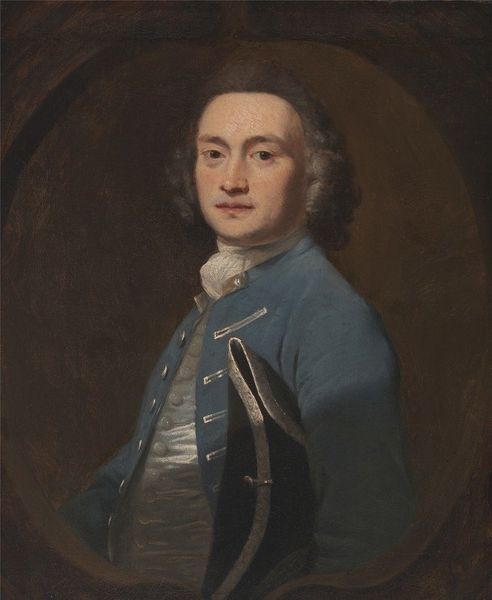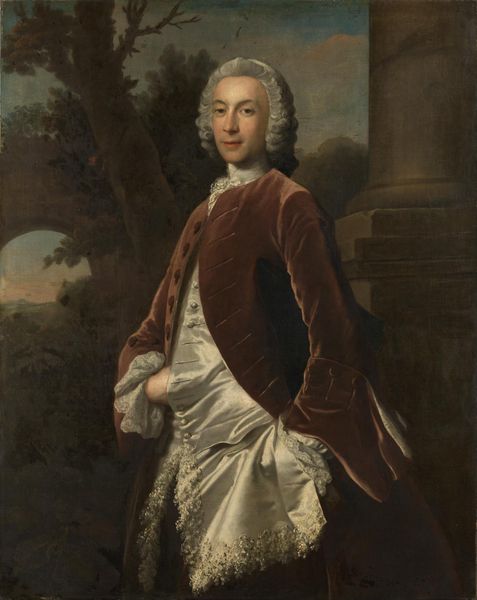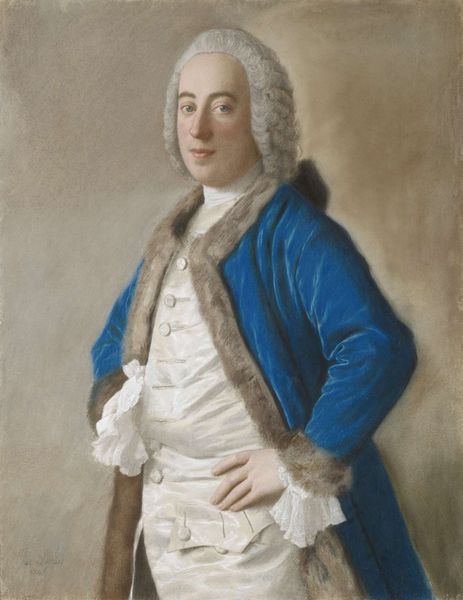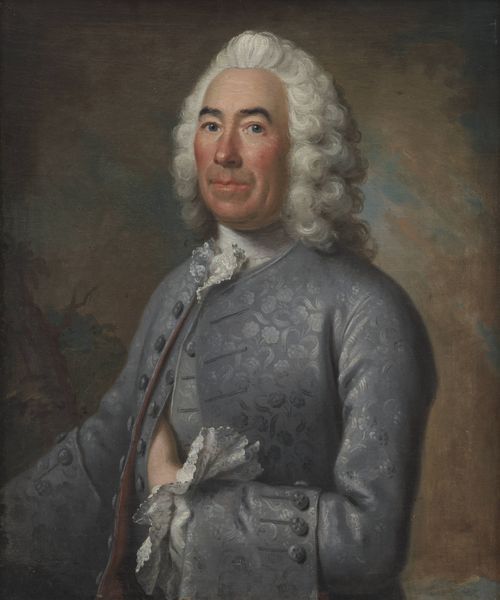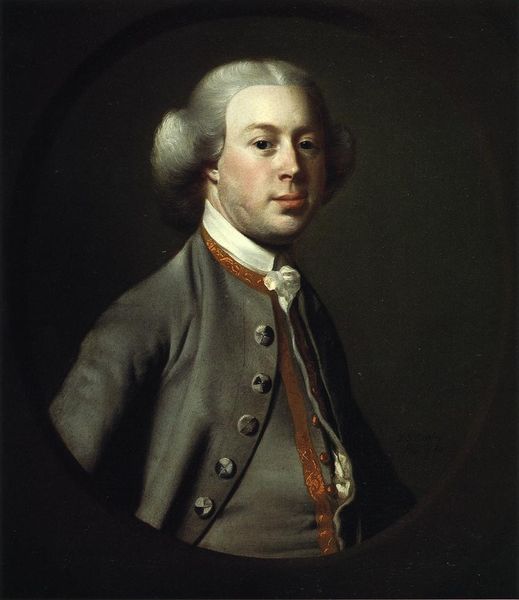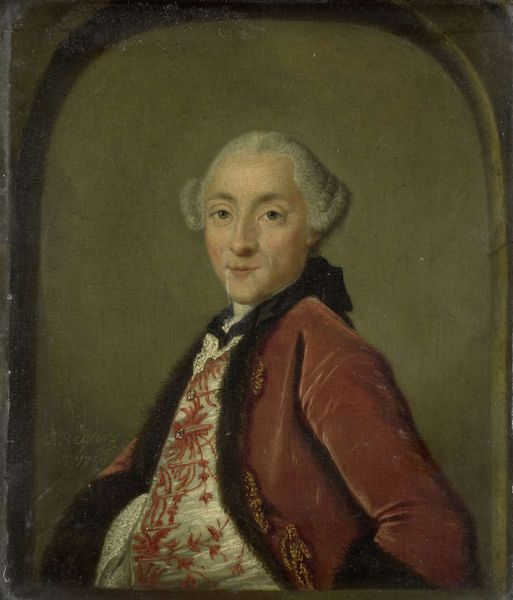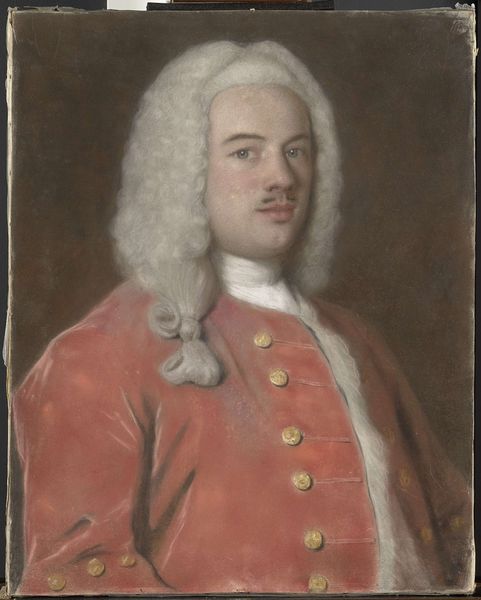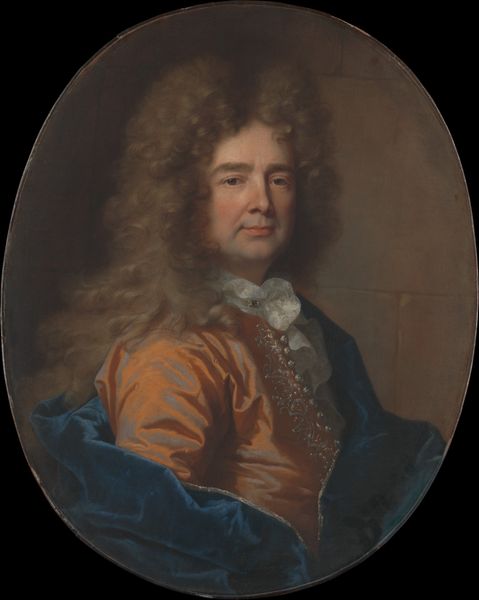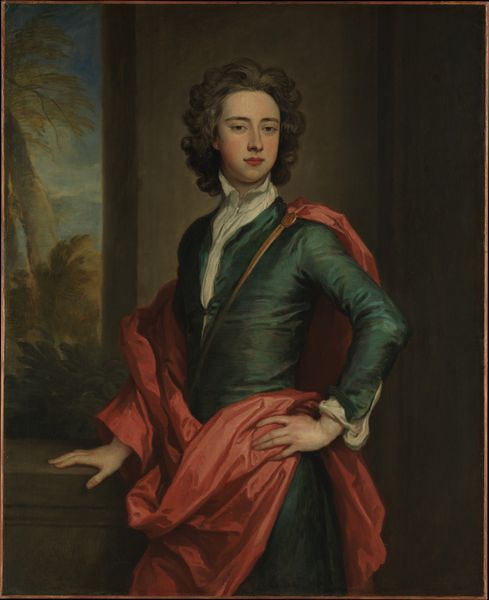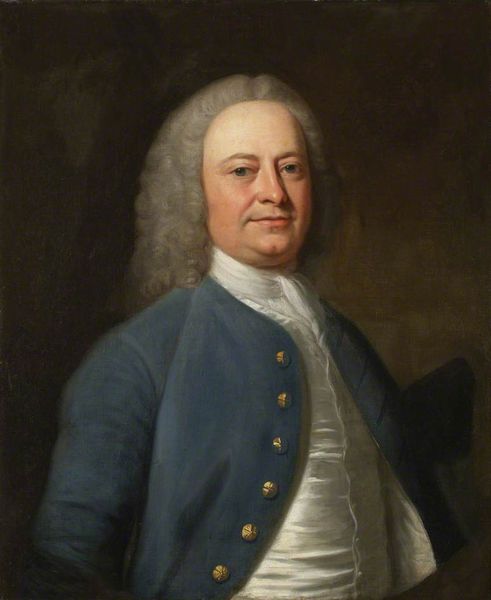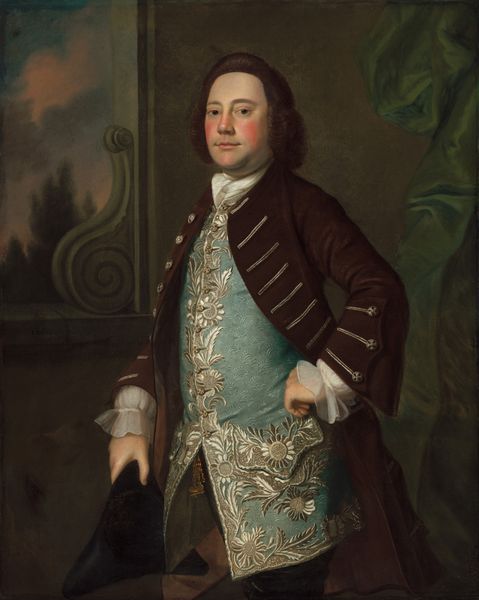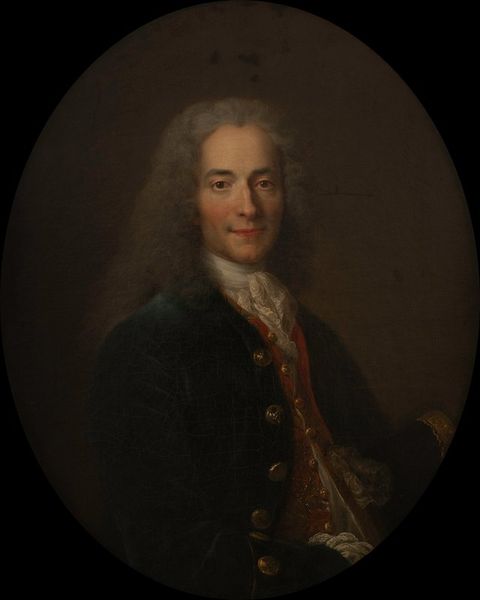
Portrait of Isaac Sweers, Chief Officer of Amsterdam and Governor of the Dutch East India Company 1730 - 1740
0:00
0:00
cornelistroost
Rijksmuseum
oil-paint
#
portrait
#
baroque
#
oil-paint
#
history-painting
Dimensions: height 59 cm, width 47 cm, depth 5 cm
Copyright: Rijks Museum: Open Domain
Editor: So here we have Cornelis Troost’s oil on canvas, “Portrait of Isaac Sweers, Chief Officer of Amsterdam and Governor of the Dutch East India Company,” dating from 1730 to 1740. I find it really interesting that the muted colour palette and shadows give it an air of understated power. What's your read? Curator: It makes me think about what power meant back then, doesn't it? The restrained elegance – the slightly too-big wig, the lace like frozen froth – it’s all a performance. You see the control he exudes, but also, perhaps, the weight of responsibility etched faintly around his eyes. I always wonder about the man beneath all those symbols of status, you know? Editor: Definitely! All those frills and finery hiding...what, exactly? I guess I'm used to seeing portraits scream wealth, and this one whispers it, almost hesitantly. Do you think that makes it more relatable? Curator: Relatable? Hmmm. Maybe not relatable, but certainly intriguing! Think about what the Dutch East India Company represented— immense global reach, trade routes spanning the world...but also, exploitation and colonialism. Troost has painted a man complicit in all of it. He’s not idealized; you can see his humanity, however flawed. What is not depicted speaks volumes about what it cost this man to achieve his status. Editor: Wow, I hadn’t really considered that side of it. I was so focused on the almost gentle nature of the portrait itself. Curator: That's the thing about art, isn't it? It’s never just what you see, but what you *start* to see after a while… It holds up a mirror, both to the sitter and to ourselves. Editor: So true, I’ll never see a portrait in the same way again. Thanks!
Comments
No comments
Be the first to comment and join the conversation on the ultimate creative platform.
